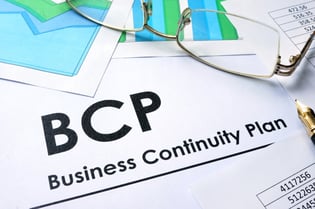
Disaster recovery (DR) plans are more than just “insurance policies” or safety nets. They’re the single most important way to protect your organization.
Also known as business continuity plans, these strategies are sets of policies, tools, and procedures that ensure consistent operation of an organization in the face of emergencies or unplanned incidents.
- Natural disasters that disrupt infrastructure;
- Server crashes;
- Virus infection, malware, or hacking;
- Insolvency of suppliers or service providers.
These plans are designed to reduce the damage caused by these events, minimize downtime, and help restore normal business functions within a relatively short timeframe.
Nobody can predict when these types of catastrophes will occur. But when they do, your business needs to be prepared.
For strategies to help your business overcome both natural and man made disasters, check out
Business Continuity Plans Aren’t Optional
In a 2015 survey conducted by Continuity Central, respondents were asked about the biggest challenges holding back their businesses from building out their continuity strategies. The majority of respondents cited two reasons:
- Lack of budget, funding, and resources;
- Lack of top management commitment and support.
Companies believed they couldn’t spare the resources to improve their DR plans. The management behind the decisions decided there were more important priorities to focus on. Unfortunately, since the time of this survey, we’ve seen some serious problems facing the global landscape:
- Worldwide outbreaks of ransomware such as WannaCry and NotPetya have affected hundreds of thousands of unprepared systems;
- Natural disasters such as hurricanes Maria, Harvey, and Irma that caused hundreds of billions in infrastructure damage along with the loss of thousands of lives;
- Global data breaches have occurred, such as the widely-publicized Equifax breach that affected 143 million Americans and caused a company stock valuation drop of four billion.
What’s the worst part of all this? All of these events occurred within the span of one year: 2017.
Any single data breach, natural disaster, or malware attack can spell disaster for your business. And with the increase in global supply chains, outsourced services, and geographically-agnostic data storage centers, even small businesses face unprecedented levels of risk.
Protect Your Business With a Continuity Plan
Fortunately, SME’s aren’t alone in the fight. Business continuity service providers have risen to meet these challenges and offer extensive DR plans to help protect your enterprise.
– Disaster Recovery Planning
- Identify threats, define processes, support employee training, customer awareness, and define roles to ensure your team is ready to act
– Automated Backups
– Security and Prevention
– Data Restoration and Instant Virtualization
Ludovic Levivier
Founder & CEO, LINC Project, INC. a Managed Service Provider in New York and San Francisco



.png?width=306&height=50&name=Logo_width.jpg(2).png)


